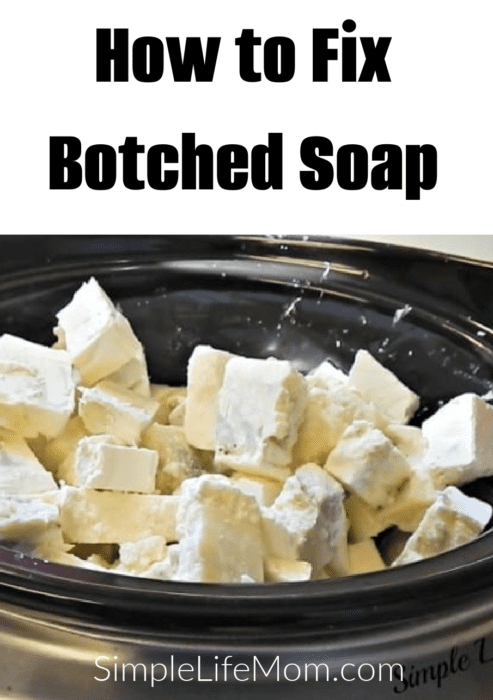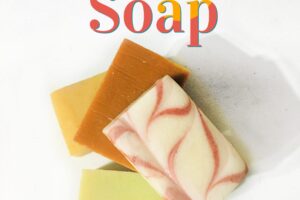There are a number of reasons to hand mill soap. The biggest reason people hand mill soap is to fix botched soap and other soaping problems.
Sometimes you forget to add enough water, enough oil, or add too much lye. If you know what you did (and sometimes if you’re not quite sure) you can still fix the soap. After all, who wants to throw away all of those good ingredients?

Reasons to Hand Mill Soap
There are many reasons to hand mill soap. Fixing botched soap is only one of them.
Using Soap Right Away
Some people hand mill soap right after they’ve made a cold process batch, because they like the idea of being able to use it right away.
Hot processing and hand milling increases the speed at which the soap cures by evaporating the water within the soap and making it harder faster.
While most people will tell you that lye is still finishing the process in cold process for 4-6 weeks. The real reason cold process needs to cure is to evaporate the water and allow the soap to harden. The saponification process in cold OR hot process is over from 24-48 hours after it is poured into the mold.
Fix Botched Soap
Another reason people will hand mill soap is when something goes wrong.
Basically, never throw out a botched batch of soap. It can almost always be fixed.
It may not be exactly as you envisioned in the end, but you will definitely end up with a soap that is usable. So, no waste!
Which is especially great to know if you are nervous about making soap or if you have put in a lot of expensive ingredients.
If you end up with a chalky soap that is crumbling in your hands, it could have not been insulated well enough in the first few hours, or it could be lye heavy. Either way, you can cut the batch into pieces (like I did in the video) and make it come out wonderfully.
If you suspect that it is lye heavy, just add a bit of oil to your batch. If you know how much lye you added, then add oils to compensate for this.
If it is messed up from seizing in the pot or not being warm or being too hot in the mold, then hand mill it and add some water. I add a few tablespoons and then seal with plastic wrap to keep the moisture in while it melts.
Draw backs?
For the same reason people like to hot process soap (the texture) and hand mill, others don’t like to. I, personally, prefer the look of the smooth cold processed bar, but when you need to hand mill, you need to.
Please Subscribe to my YouTube Channel.
How to Hand Mill Soap Video Tutorial
How to Hand Mill to Fix Botched Soap
- Make your soap as usual, by bringing it to trace.
- If you have already let the bars set, that’s fine, just break them into small chunks and throw them into the crockpot.
- Add a touch of oil if your soap is lye heavy. Otherwise, add a few tablespoons of water and watch it as it starts to warm. It will become bubbly around the outside edges. Cover with plastic wrap to keep the moisture in the crockpot.
- Turn it on the lowest setting. You don’t have to stand over it. You can walk away, but check back every 10-15 minutes. When it starts to bubble, give it a stir. You want the entire batch to get the bubbly translucent look to it.
- When the entire batch is translucent, you are probably done. This should take at least 1-3 hours, depending on the heat setting of your crockpot.
- Add essential oils and mix.
- Line your mold and scoop it in. Pat it with a spoon to get out any air bubbles.
- Texture the top as desired.
- When it is cool and hard, remove and cut. It will continue to harden as it cools, but it can be used immediately.
If you’re looking for cold processing soap instructions see: 7 Easy Steps to Homemade Soap for Beginners








33 Comments
Leave your reply.